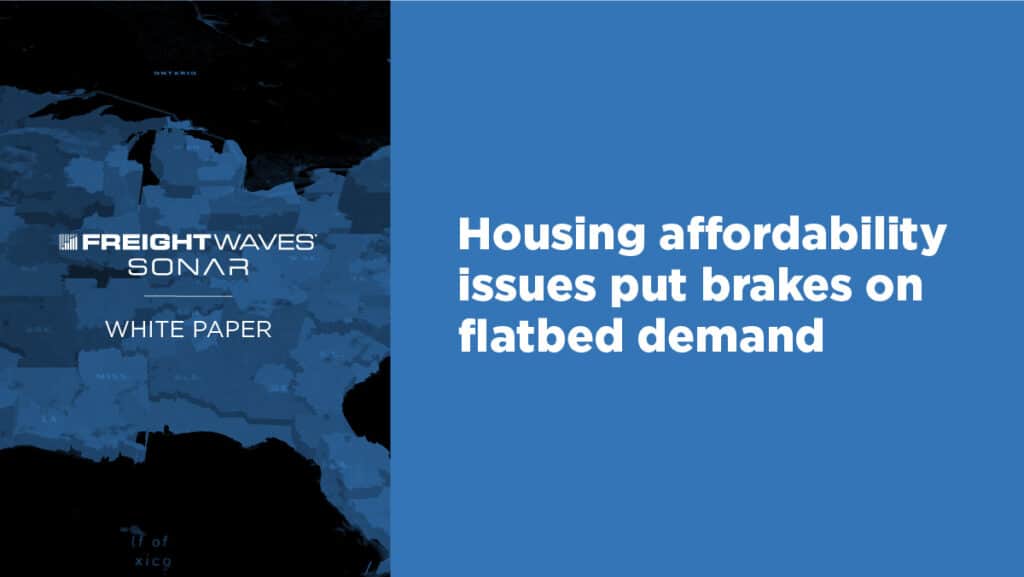Throughout the period of economic recovery following the early 2020 recession, the growth in new and existing home sales seemed inexorable. That has transformed a miserable market for flatbed carriers into a nicely profitable one. But, market forces have put the brakes on the continuous improvement in the market (from the perspective of the carriers) and the latest housing-related data points are off their recent highs, as are most flatbed-related data points. That causes us to wonder whether the market can get much better for flatbed carriers.
Unfulfilled consumer demand to buy homes remains extremely high, but the reality of high prices and tight lending standards has brought many consumers to reality. Meanwhile, the lack of available lots, expensive building materials and labor availability issues have slowed recent construction trends.
New and existing home sales impact many transportation modes including maritime, dry van and intermodal, but due to its specialized nature and relatively small market size, we believe no transportation segment is more directly impacted than flatbed trucking.
Leveraging electronic tender data contained in SONAR, this report illustrates how the domestic flatbed market has tightened during the past year, going from its status as perhaps the loosest domestic transportation segment to become as tight, or tighter, than the dry van market, a segment that remains characterized by scarce capacity. To illustrate, flatbed tender rejection rates increased from a low of less than 1% in April 2020 to 30% in June 2021 before retreating to 26%.
In addition, data from surveys of small and mid-sized flatbed carriers show how improved flatbed volume has translated into improved operating and financial performance for flatbed carriers. Favorable demand enabled flatbed carriers’ operating ratios to break out of the 95%-105% range into the mid-80s. The carriers did this through improved load selection that enabled them to run fewer miles out of route, improved rates, improved driver productivity and by carrying more long-haul loads.






